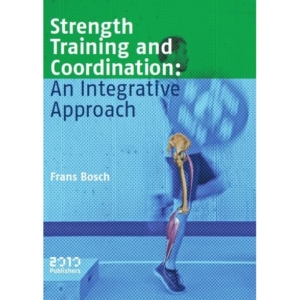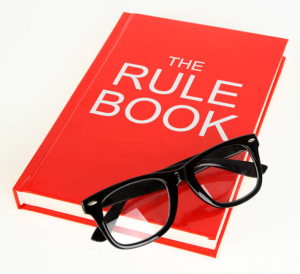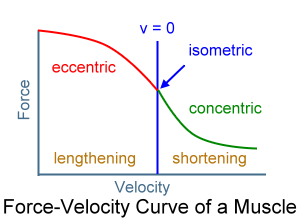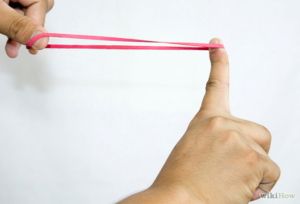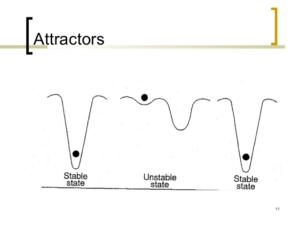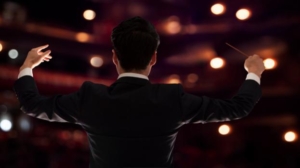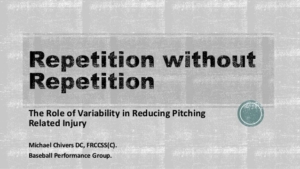What can Tennis learn from Fast Bowlers?
On the 16th and 17th July I went down to Wellington School, Wellington, Somerset to attend the first two days of Steffan Jone’s Pacelab training camp for a group of fast bowlers. For those of you who haven’t been following my tweets and posts on social media I have been taking the time recently to get to grips with some motor learning theories that at first glance fly in the face of established principles of strength training based on Newtonian laws.
My original intention was to summarise my trip and give some insights into what I learnt and how I can apply that to the APA Training method and Tennis. But there was just so much information to digest and much of it hung on my understanding of some of the motor learning principles pioneered by Frans Bosch and Periodisation concepts of Anatoliy Bondarchuk. So I thought I would do a three part series on this, and having established the theory, do a round-up of my trip.
- Part 1- Strength Training and Coordination- Frans Bosch
- Part 2- The Bondarchuk principles of Periodisation
- Part 3- Putting it all together- my visit to Pacelab
Part 1 Strength Training and Coordination- Frans Bosch
This book is one of about 30 books that stay on my book shelf, ready to be re-read again and again. It isn’t a easy read, definitely more on the advanced end of sport science principles. It reminds me of ”Special Strength Training Manual for Coaches” which is another of my favourites. Every time you read it, you learn something new.
In the interests of not making this blog too long (if you’re really interested in the topic you’ll buy the book yourself!) I want to summarise my take away learnings from the first four chapters. For me, these first four chapters set the theoretical underpinning for the remaining three chapters to give practical examples of overload, specificity and sport-specific training examples.
The introduction criticizes our tendency to compartmentalise the trainable aspects of the body into basic motor properties of strength, speed, agility, stamina and coordination. The book sets out to demonstrate that this is not so, and that the basic motor properties can hardly exist in isolation. Strength and coordination are thus closely related, and should in fact be treated as a single unit.
Sport-specific strength training means coordination training against resistance
I had to chuckle because the very back bone of the APA Training Method is the 5 S’s of Biomotor Ability. However, I know that I am consciously simplifying the complexity of the body, in order to create a starting point for a common language. I am not suggesting that physiological systems operate in isolation.
1 The basic concepts of strength and speed
Frans challenges coaches tendency to view adaptations in a predictable linear fashion. But the body’s response to training is unpredictable. All we have established so far is that periodisation with variation is better than training without variation. We get our first introduction to the term ‘dynamic systems‘ which refers to the overall structure of complex systems and its implications for how the body behaves. When we move in sport, adjustments to movement have to be made in milliseconds and these fluctuations are self-organizing.
We are introduced to the concept of decentralised factors which cannot be readily controlled by central nervous system (CNS) and we need to ‘plan’ for a degree of ‘noise’ in the system which won’t be accounted for with a linear understanding of the adaptation to stress.
This means there are no fairly rigid motor programmes stored in the brain, but that movement is composed on the basis of flexible sets of movement rules that are generally applicable and can filter and shape incidental adjustment to the demands of the environment. I always thought of fundamental movement skills and sport skills being a kin to uploading some new software onto your computer (brain) and you can access the relevant software to run the sport or task required. This gives further insight into the way the brain remembers movement through movement ‘rules.’
This also calls into question the need to seek movement perfection seen in physical therapy, golf, and martial arts to name but a few.
The precisely taught lifting technique will NOT be remembered, if only because the objects that are lifted in every day life all differ in shape and weight. Stable yet flexible movement patterns do not develop by learning techniques precisely, but through self-organization from complexity.
In terms of movement coaching, a whole-part-whole approach is encouraged. The whole part guarantees a combination of sensorimotor factors that is relevant to the sporting movement. Part practice will occasionally be required to ensure progression. Out of interest, whole implies a tactical context so when a coach feeds controlled balls so the player can alternate practising forehands and backhands, this is a type of part practice!
Furthermore, approaching sport-specific strength training from a purely physiological angle disregards the way in which the ‘learning system’ organises movements and transfers between them. The most difficult choices coaches have to make are in the grey area between strength training and technique training. Ultimately as a coach you have to decide if the root cause of the problem is with ability to produce enough force (increase resistance) or technique (reduce resistance)
2 Anatomy and limiting influences on force production
I will spare you an Anatomy & Physiology lesson. In essence we are challenged to review our thinking which bases strength training on the qualities in the contractile parts of the muscle associated with force production. Instead, also appreciate that neuromuscular factors linked to coordination have a role to play in regulation of force production. What truly limits maximal force production ”during athletic movements?”
For me the context of the actual sporting movement is finally starting to come home. I’m starting to appreciate that maximal strength training is designed to increase your potential (physiologically), not your performance. Strength training can aid in your sports training but the increase in muscular contractile capabilities that may aid in ability to produce force at higher velocities will diminish as the training level of the athlete increases. Ultimately it comes down to how much force you can access during the time frame of your sporting movement.
There was a good summary of the Force-Velocity relationship indicating that a muscle fibre is not able to produce high force and shorten rapidly at the same time. We also got to see that different types of muscles favour high force (gluteus maximus) or high velocity (rectus femoris) contractions or both (gastrocnemius).
For me the big take away was in the fantastic description of elastic properties of muscle and the concept of ‘muscle slack.’ For a comprehensive discussion on this topic check out Strong by Science blog Muscle Slack and High Velocity Training: An Integrative Approach and Muscle Slack, which are both well worth a read.
The elastic components of muscle known as serial elastic component (SEC) act as:
- shock absorbers– resisting opposing external forces
- energy storers– storing energy of opposing forces during elastic stretch
Now, most rapidly performed movements generate large external forces that load the muscle with eccentric torque and so TRY to move the attachment points further apart. The muscle can use its elastic components IF the force does not exceed the maximal isometric force in the contractile elements (CE).
Critical to this is the understanding that elastic muscle use is different from concentric explosive muscle use (speed skater push off, swimmer block start etc) or the commonly referred to stretch shortening cycle (SSC) which features an eccentric-concentric action. High speed movements such as throwing, sprinting and jumping from a run up use an elastic muscle action, with muscle fibres acting isometrically and the musculo-tendinous units lengthen and shorten stretching the elastic parts.
Furthermore, if the change in knee angle in the stance phase of a jump exceeds 20-25 degrees there is little opportunity for short contact time and elastic muscle action, so amplitude of jump is a key determining factor in the underlying muscle action taking place. Athletes are often unable to limit the range of the countermovement sufficiently because they lack the necessary mastery (and strength in my opinion) of the pretension technique.
I always just assumed that the bigger the range of the movement, the more effective the following muscle action would be, like firing an elastic band analogy (above). However, where we get lost is that we often look at sports performance through the height of a jump as a measure of explosive power. It is true that the counter movement jump (CMJ) will enable someone to jump higher than a squat jump. But the higher movement velocity from the CMJ is the product of a longer movement time (ground contact time) and ”unnaturally” aided pretensioning and muscle slack reduction (unnatural because in sport there isn’t enough time for larger counter movements) which means early rate of force development (RFD) and reduction in muscle slack are not being trained.
You want to limit the eccentric action of muscle fibres. Any lengthening that occurs is mainly due to slack muscle becoming taut. What this means for training of high speed movements such as sprinting and single leg hop with a run up is that counter movements should be avoided.
The final section looked at neuromuscular function and in particular the size principle. This means that the order of the recruitment depends on the size of the stimuli emitted by the central nervous system. We get stronger because we recruit more motor units (more of the larger FT fibres) through stronger and more frequent signals to the muscles, and later through improved synchronisation of the fibres. So initially the idea in training is to progressively lift heavier weights in order to maximise the physiological potential of the FT fibres.
The idea of training with lower resistance and somewhat less predictable external forces is important not only in sport specific training but also in rehabilitation. Being able to cope with unexpected external forces may be more important when relearning how to function in every day life than learning to cope with large external forces that can be easily estimated.
3 Analysing the sporting movement
The focus of this chapter was Dynamic Systems theory and the concept of attractors and fluctuators. I said earlier that I always thought of fundamental movement skills and sport skills being a kin to uploading some new software onto your computer (brain) and you can access the relevant software to run the sport or task required.
The idea of having to improvise a movement and adapt it to the constantly changing demands of the environment does NOT mean that ALL of the components of the movement are constantly adapted. Instead some are adapted and others remain unchanged
Effective movement is then a matter of changing the right components in response to the demands of the environment while leaving others alone. According to the dynamic systems theory, the essence of motor control is more or less automatic elimination of superfluous alternatives or degrees of freedom.
- Stable economical components of movement are referred to as ‘attractors‘
- Unstable, high energy ones as ‘fluctuators‘
The fluctuators are needed in order to adapt the movement to the shifting demands of the ever-changing environment in which the athlete is moving. When you learn a new movement, use is made of fixed components (attractors) of movements from other, already known movement patterns. This is useful because it limits the degrees of freedom (the endless possibilities of movement solutions).
According to Bosch, this division into stable and unstable components cannot possibly develop from hierarchical top-down organization of the CNS. Higher parts of the system ensure ‘general’ more abstract rules of the movement, while ‘specific’ muscle actions and ranges of motion tend to develop from self-organisation of the musculoskeletal system. This capacity for self-organization is used to prevent at risk positions.
Bosch examines eight attractors of sport
- Lock position of the hip
- Swing leg traction
- Foot plant from above
- Positive running motion
- Keeping the head still
- Upper body first
- Extending the trunk while rotating
- Distributing pressure when decelerating
4. Fixed principles of training: contextual strength and coordination
In this chapter we learn about the importance of co-contractions to reduce muscle slack and we also look in detail at the laws of motor learning. This whole chapter sets the scene for variation as a main means of training overload.
This chapter gets to the core of the issue- divergent theories about the relative importance of physiological adaptation (load capacity) versus motor learning adaptation (motor control).
It’s discussed whether maximal strength is a possible performance-limiting factor? If it was, Bosch argues, we would all work on making our muscles stronger, make passive structures more able to absorb more tensile forces, and the strongest athletes would always be the fastest athletes. But this isn’t the case.
In technically somewhat complex sports, increased force production does not automatically lead to improved performance.
In explosive sports, performance is largely limited by the requirement that the movement must be controllable.
A movement is only controllable if it can withstand external pertubations (surface of ground, weight of a ball, and any other unexpected movements) as well as internal pertubations (fatigue). One of the most important mechanisms for controlling movements and making them robust is the influence of co-contractions in what is known as ‘speed/accuracy trade-off.’
The more speed, the more noise or ‘variability’, the more co-contractions, the more the speed of movement will be inhibited. So the movement will be limited by coordination issues before the load capacity is reached. The joint is protected by the mechanical properties of the muscles, but at the expense of speed movement.
In conclusion, the limit on performance in explosive movements is probably determined by the demands that motor control makes on intensive movements.
The second part of the chapter focused on the laws of motor learning
- Cognitive schema theory– all information about how to execute a movement is generated by the CNS
- Importance of Knowledge of Results (KR) feedback in terms of intention-action model
- Importance of Variable learning
The problem with many strength exercises is that they lack a clear intention. Children learn by copying an adult’s intention. The body does not think in terms of processes, but in terms of the results of the movements. If attention is focused outside the body on features related to the movement, the movement and motor learning processes will be controlled more effectively.
It is really important to look for KR feedback in practical coaching so that it can replace over-dominant KP feedback. The KP would be instruction from a coach on correct technical performance, and KR would simply be using a tape measure to record how far the discus was thrown. The KR feedback leads to external focus, which is a good thing. This doesn’t mean that coaches no longer have any part to play, but that they should be gardeners rather than conductors!
Gardeners do not decide when or how fast plants should grow-when the next step should be taken in the learning process- but simply hoe and fertilize. Create a learning environment with movement puzzles to solve and let them implicitly learn to recognize a biomechanically optimal solution.
The final topic discussed was the role of motivation. Repetition has not only the advantage of imprinting a movement, but also the disadvantage of reducing motivation. Sensorimotor ‘chaos’ is the basis for learning. Variation in the execution of the movement in unfamiliar settings creates chaos- which is a good thing for learning.
More than anything the most compelling reason why periodisation models work is because periodisation lads to variation in training!
The learning system usually finds strength training monotonous and boring! It also impairs coordinative transfer. Perhaps one of the reasons we hit a learning ceiling is because training is too monotonous. But just as there is a point of diminished returns with strength training (Load capacity) there is also a limit to the value of variation.
When working with youths variation helps athletes develop the building blocks of movement control. Spend a few years building up a good catalogue of basic components through variable training. Only then does it make sense to start using larger barbell weights.
For example see below for some progressions in a step-up:
- Asymmetrically balanced bar on shoulders
- Vary the step up height
- Vary movement of the free (swing) leg
- Vary horizontal movement- placing more load on hamstrings
- Combine step up with torsion in the upper body
Repetition without repetition (Bernstein)
Differential learning and Random learning are the two forms of variable learning.
- Differential learning– learn by frequently alternating many variants of one movement in one session
- Random learning– learn by frequently alternating many different movement patterns in one session
The effects of learning the ideal technique and differential learning are different. Learning the ideal technique will yield faster results- but this is deceptive, for the effect is usually temporary. Not only is the solution quickly forgotten, but it can’t be easily transferred to other sporting movements. In differential learning the immediate results (practice results) are not so good, but the eventual impact on the sporting movement turns out to be better and more lasting (the learning result).
Where I am next presenting?
FREE WORKSHOP: 5 Numbers to Live By
Dates: 9 Sept 2018, 09:00AM-12:00PM Location: Gosling Sports Park, Welwyn Garden City, AL8 6XE
Book your spot HERE
Hope you have found this article useful. Remember,
- If you’re not subscribed yet, click here to get free email updates, so we can stay in touch.
- Share this post using the buttons on the top and bottom of the post. As one of this blog’s first readers, I’m not just hoping you’ll tell your friends about it. I’m counting on it.
- Leave a comment, telling me where you’re struggling and how I can help


